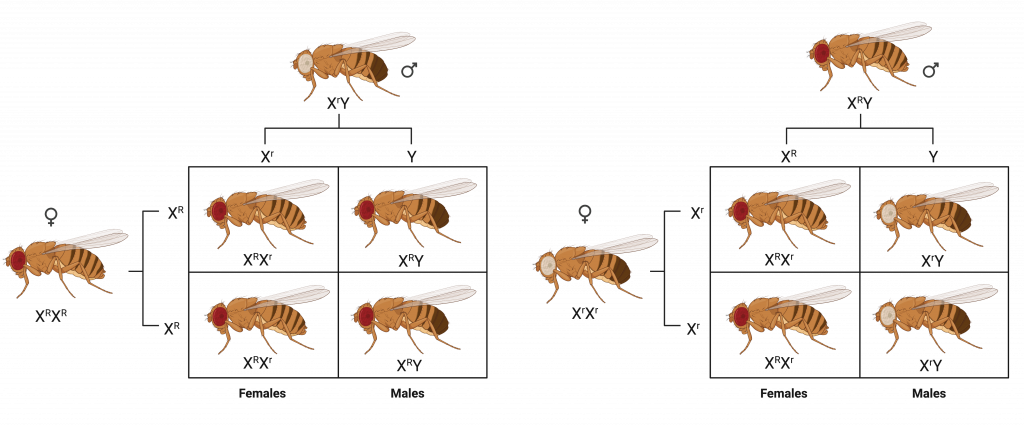20.2 Sex-linked traits
X-Linked Traits
In humans, as well as in many other animals and some plants, the sex of an individual is determined by sex chromosomes. The sex chromosomes are one pair of non-homologous chromosomes. A sex chromosome can be defined as a chromosome that is present in a different copy number in the cells of a female compared to the cells of a male. The sex chromosomes in humans and many other species are named X chromosomes and Y chromosomes.
An autosome is any chromosome that is present in the same number of copies in the cells of a female as in the cells of a male. Humans contain 22 pairs of autosomes (numbered 1 – 22) in addition to a pair of sex chromosomes. Human females generally have two copies of the X chromosome and 0 copies of the Y chromosome; while human males generally have one copy of the X chromosome and one copy of the Y chromosome. Although the Y chromosome contains a small region of similarity to the X chromosome so that they can pair during meiosis, the Y chromosome is much shorter and contains many fewer genes. When a gene is present on the X chromosome, but not on the Y chromosome, it is said to be X-linked.
Until now, we have only considered inheritance patterns involving genes located on autosomes. Eye color in Drosophila was one of the first X-linked traits to be identified. Thomas Hunt Morgan mapped this trait to the X chromosome in 1910. Like humans, Drosophila males have an XY chromosome pair, and females are XX. In flies, the wild-type eye color is red ( based on the XR allele) and it is dominant to white eye color (based on the Xr allele). Because of the location of the eye-color gene, reciprocal crosses do not produce the same offspring ratios. Males are said to be hemizygous, because they have only one allele for any X-linked characteristic. Hemizygosity makes the descriptions of dominance and recessiveness irrelevant for XY males. Drosophila males lack a second allele copy on the Y chromosome; that is, their genotype can only be XRY or XrY. In contrast, females have two allele copies of this gene and can be XRXR, XRXr, or XrXr.

In some groups of organisms with sex chromosomes, the sex with the non-homologous sex chromosomes is the female rather than the male. This is the case for all birds. In this case, sex-linked traits will be more likely to appear in the female, in which they are hemizygous.
Human Sex-linked Disorders
Discoveries in fruit fly genetics can be applied to human genetics. When a female parent is homozygous for a recessive X-linked trait, she will pass the trait on to 100 percent of her offspring. Her male offspring will express the trait, as they will inherit their mother’s X chromosome with the recessive allele, and their father’s Y chromosome.
In humans, the alleles for certain conditions (some forms of color blindness, hemophilia, and muscular dystrophy) are X-linked. Females who are heterozygous for these diseases are said to be carriers and may not exhibit any phenotypic effects. These females will pass the disease to half of their sons and will pass carrier status to half of their daughters; therefore, recessive X-linked traits appear more frequently in males than females. Females must inherit recessive X-linked alleles from both of their parents in order to express the trait.
Although some Y-linked disorders exist, they are rare. Moreover, they are often associated with infertility in males and are therefore not usually transmitted to subsequent generations.
any of the non-sex chromosomes
presence of only one allele for a characteristic, as in X-linkage; hemizygosity makes descriptions of dominance and recessiveness irrelevant

